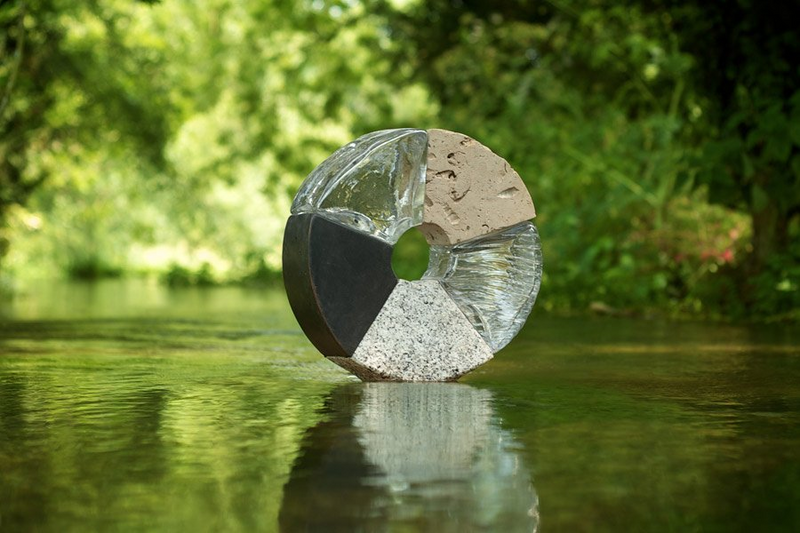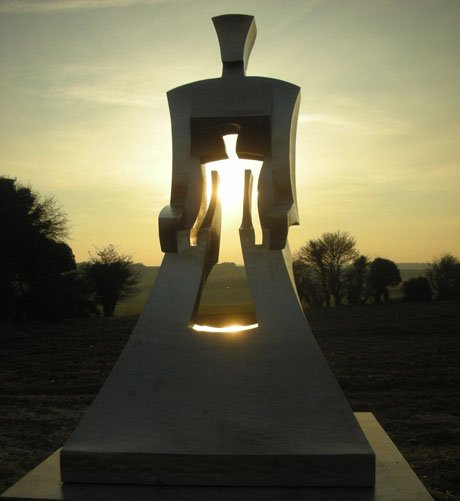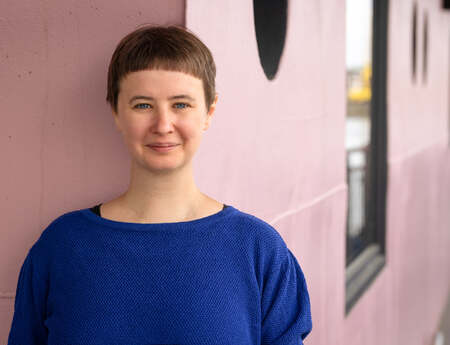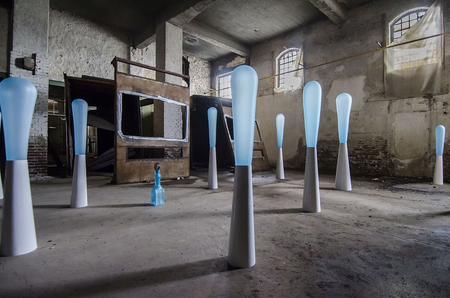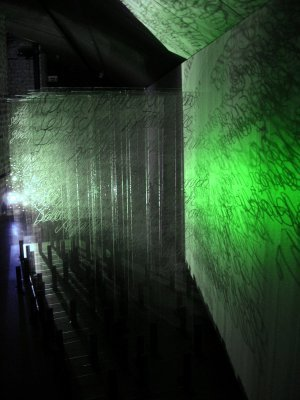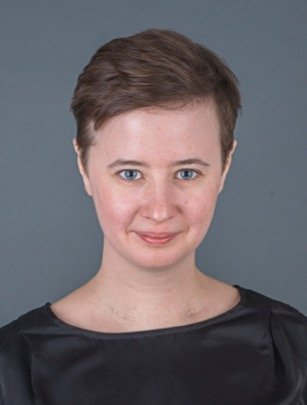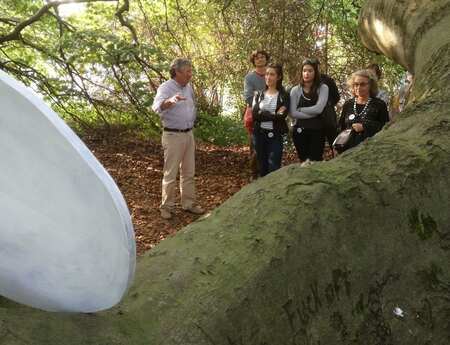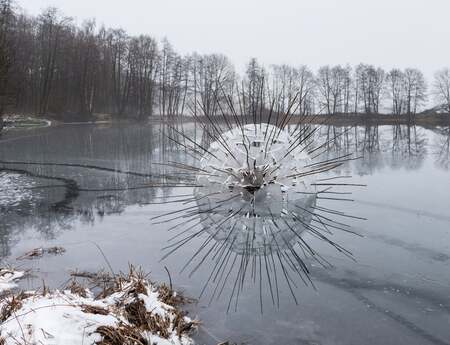Destruction and Creation
In order to create glass, the first step is to heat stone and metal, both in powdered form, to an incredibly hot temperature thus, in principle, destroying them. That means that before the artistic process using glass can be started a destructive force must be used in order to create the raw material. Then the glass is formed by blowing or casting – still at immensely high temperatures. This is followed by several days of cooling before processing can continue.
We spoke to four sculpture network artists about their work with this exceptional material and the path they followed to arrive where they are today. Starting with Eva Moosbrugger, who first had to flounder with stone in order to discover her love for glass, then with Alexandra Bremers and Christine Candolin, who both create philosophical and psychological subject matter in their installations with (and without) glass, concluding with Johannes von Stumm, who places the materials of metal and stone, both of which must initially be destroyed to create glass, in a trialogue with it.
„I put the loneliness of being a stonemason behind me and learned to work with glass as a team.“
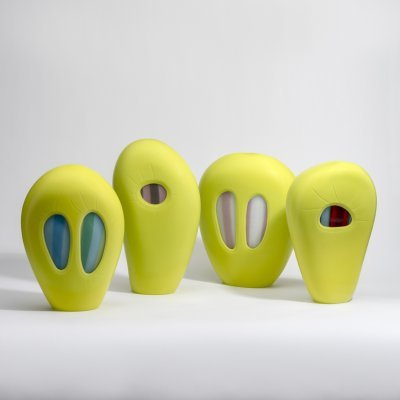
Eva Moosbrugger began her artistic work with painting. After several years with watercolors, egg tempera, oil and brush she began to create wall installations and reliefs. She combined stone, beton and concrete with found objects onto flat surfaces to create abstract pieces. The final step into the third dimension was, for her, working with ceramics. In a kiln she built herself in her garden she fired her objects, much to the great regret of her neighbors, who, due to the great amount of smoke, regularly threatened to call the fire department. But, instead of proceeding directly from ceramics to glass, her next material was stone. After several years Eva ran up against a personal limitation. „For me stone is not a material used to make cheerful things.“ A creative lull of several months followed - full of sadness and frustration. Then, completely unexpectedly she found the solution in a second-hand store in Lindau on Lake Constance: „There in the display case was something that snapped me out of my current state. It was brightly colored, three-dimensional, terribly tacky and pretty awful - a colored glass clown.“ Back from her trip she began researching her idea and convinced the (very skeptical) owner of a glassworks to help her make her vision become reality.
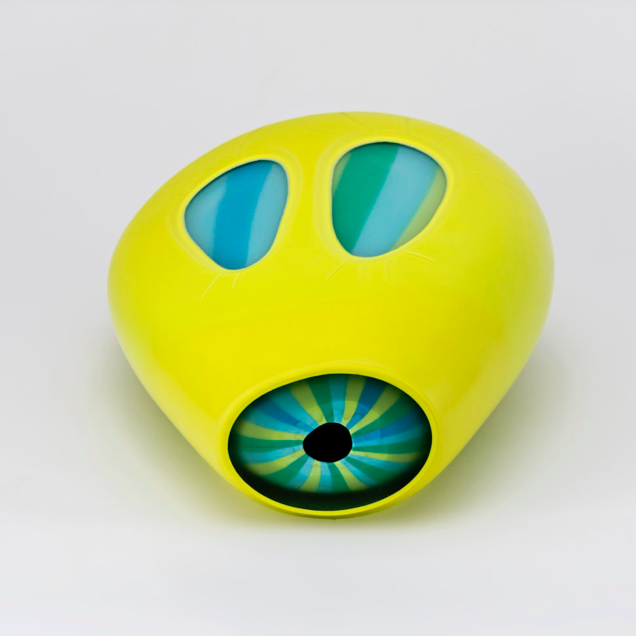
Many years later she has perfected her process, progressing from the first idea to the creation of the object while working with the team at the glass factory and after several weeks of filing. The bright colors of the clown seem to reappear in the ESPRIT SERIES. „While I was gardening I kept finding small pebbles in the vegetable patch, which really upset me at first. But when I looked at them more closely they reminded me of little heads.“ Thus she used them to create the ESPRIT SERIES - jolly garden ghosts in incredibly bright colors „in order to make the little gray pebbles happy“.
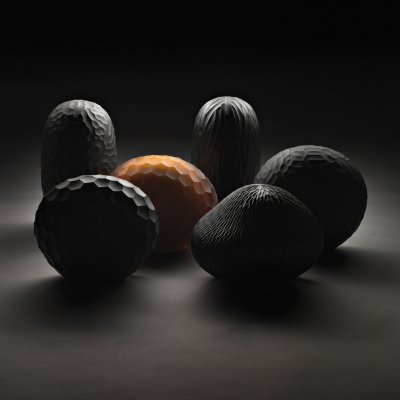
In her upcoming pieces she plans to deal with death explicitly: „At the moment these are entitled Chicas Mexicanas – the Mexicans view death as almost more important than life itself and, at first glance, celebrate it with vibrant colors and great cheerfulness, despite the very serious background of the cycle of growth and decay.“
“Creating art is the hardest thing I’ve ever done in my life because you are constantly questioning yourself.”
As a young girl Alexandra Bremers climbed a tree and saw a small looper caterpillar on a branch. While crawling along the tiny insect had placed its forelegs on a branch, its body created an arch in the air and its back legs were touching a different location on the branch. In her childlike logic Alexandra thought that the caterpillar was in two different locations and two different times simultaneously. Whenever we speak about her work with glass this image is mentioned repeatedly. The basis for her work is a combination of philosophies from Kant and Heidegger. „My interpretation of Kant is that as an autonomous artist I must set new rules for every piece. I combine this idea with Heidegger’s theory that art is the only thing that can show us its true essence. I base my artistic creativity on that.“ In addition, Alexandra regularly includes themes derived from current discoveries in neurology and the question of where ideas come from.
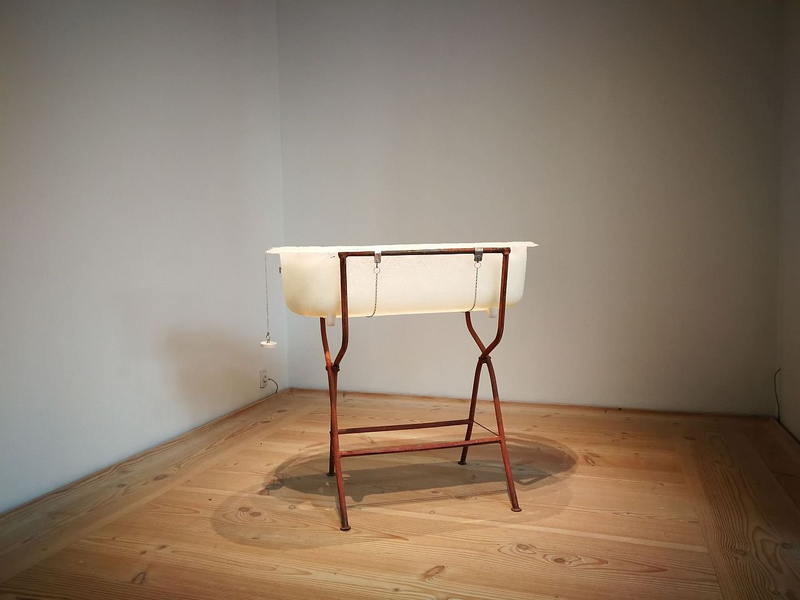
In her work Unrevealedness: The nature of the Thing. the glass objects appear to glow on the inside, they suck up daylight and simultaneously sparkle. Alexandra is thinking of the original process of creating glass: „While being made glass glows orange and while it is cooling the color disappears and the glass becomes clear and transparent – it is something that has risen above and comes back again.“
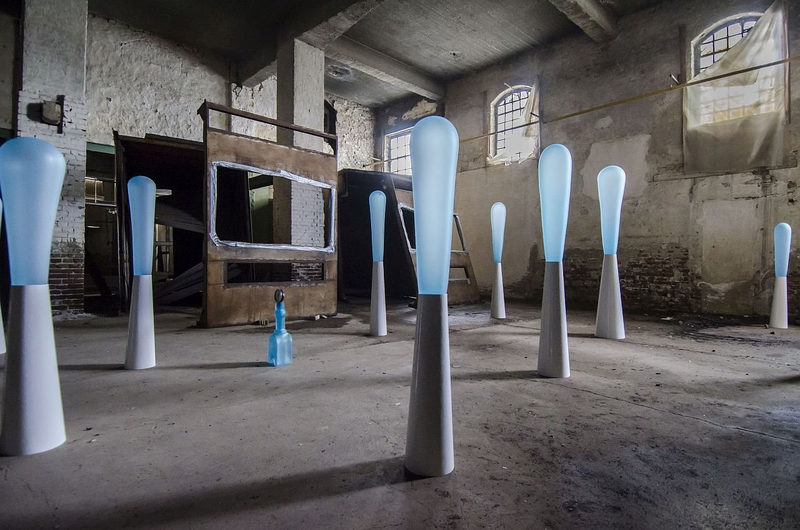
In the future the artist will continue to search for further questions and to create art that relates to the dimensions of glass and is similar to the time travel of a simple caterpillar.
“To interpret and express that which is, is an endless task for both philosophers and artists.”
Christine Candolin began her professional artistic work without any detours, directly creating installations. „I never wanted to make those classical three-dimensional figures,“ she said in our interview. Even as a child, painting was something Christine took for granted and it felt completely natural. Thus, it was no great surprise that she applied to go to an art academy directly after finishing school.
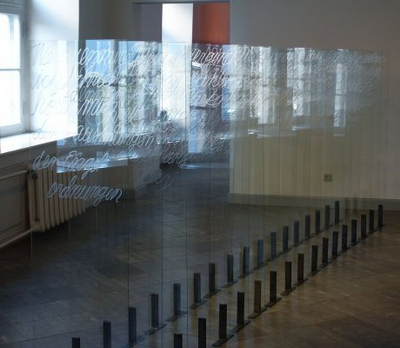
Since then she continues to experiment with various materials. And in most of her pieces glass plays a role. It is used as a transparent canvas for text, presented in multiple layers one over the other, combined with video films or serves as a relatively strong base in pieces with powders and pigments. In most of her site-specific installations glass is not a fragile, breakable material, but a strong and stable base and creates a stark contrast to soft fabrics. Her philosophical thought processes and her passion for the human psyche are just as present in her installations as is glass.
In Wer wenn ich schriee (Who when I scream) the artist transcribes a section of the Duino Elegies by poet Rainer Maria Rilke onto 17 large-sized plates of glass and places them one on top of the other. She associates the layers that are created in this manner with the complexity of human consciousness; she feels that this piece and other works form an abstract connection to her thoughts, as an expression of her occupation with the networking of material and spirit.
Future works will not only fill the room with shapes, but also with sounds, thus giving the installations yet another dimension.
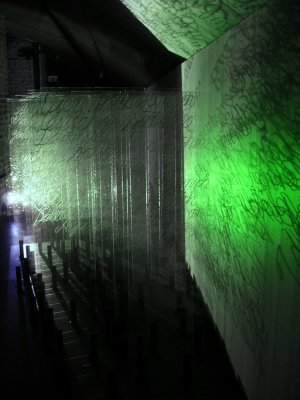
„It’s the spiritual energy of a piece of art which counts, and nothing else.“

In order to learn French Johannes von Stumm lived in Paris for a few months as a teenager. His apartment was directly across from the Musée Rodin and through the window in the wall of the museum he saw The Burghers of Calais for the first time - it was the spark that ignited the fire of his enthusiasm for three-dimensional art.
Back in Germany he attended a life drawing class at evening school. When he told his teacher that he wanted to become an artist, the man clearly advised against it: „He said, that he was an example of what became of an artist – a poor man without a wife or a car who taught evening classes at the community center.“ Following this line of reasoning he began to study law and political science. But after just a short time his path took him back to art – at the academy. Even before beginning his studies he had started to integrate shattered glass bottles and melted metal into his pieces. „I tried painting, but I didn’t have a poetic feeling for color, I just kept putting primary colors next to each other“. So he decided to pursue his passion for materials, to stand in a cloud of dust and watch the sparks fly and to study with a sculpture class. „After multiple experiments melting glass and metal together my path finally led me to the Bavarian Forest, where I learned to blow glass and how to manipulate this very special medium.“
Even today the contrast between the fragility and strength of glass continues to fascinate him and he expresses this contradiction in fascinating works of stone, metal and glass. The three materials are placed next to one another, each of which tells its own story and has different properties and yet they still work harmonically together. In his current pieces, however, the artist rarely uses the often transparent, sometimes hardly visible material, but has taken a step further towards the immaterial. In his work Mother and Child the metal sculpture creates the negative form for the actual figure – a child of (sun)light.
Regardless of whether it is brightly colored, a part of an installation or used in combination with other materials – glass is a unique material, the creation and preparation of which needs a great deal of energy. At the same time this energy can suddenly be lost during any stage of the process, be broken, crack or burst. As varied as the different pieces created by the individual artists are, glass nevertheless inherently transmits an awareness of growth and decay, for creation and destruction and gives the pieces a very special depth, dimension and light.
Thank you Eva, Alexandra, Christine and Johannes for sharing your experiences and stories with us!


